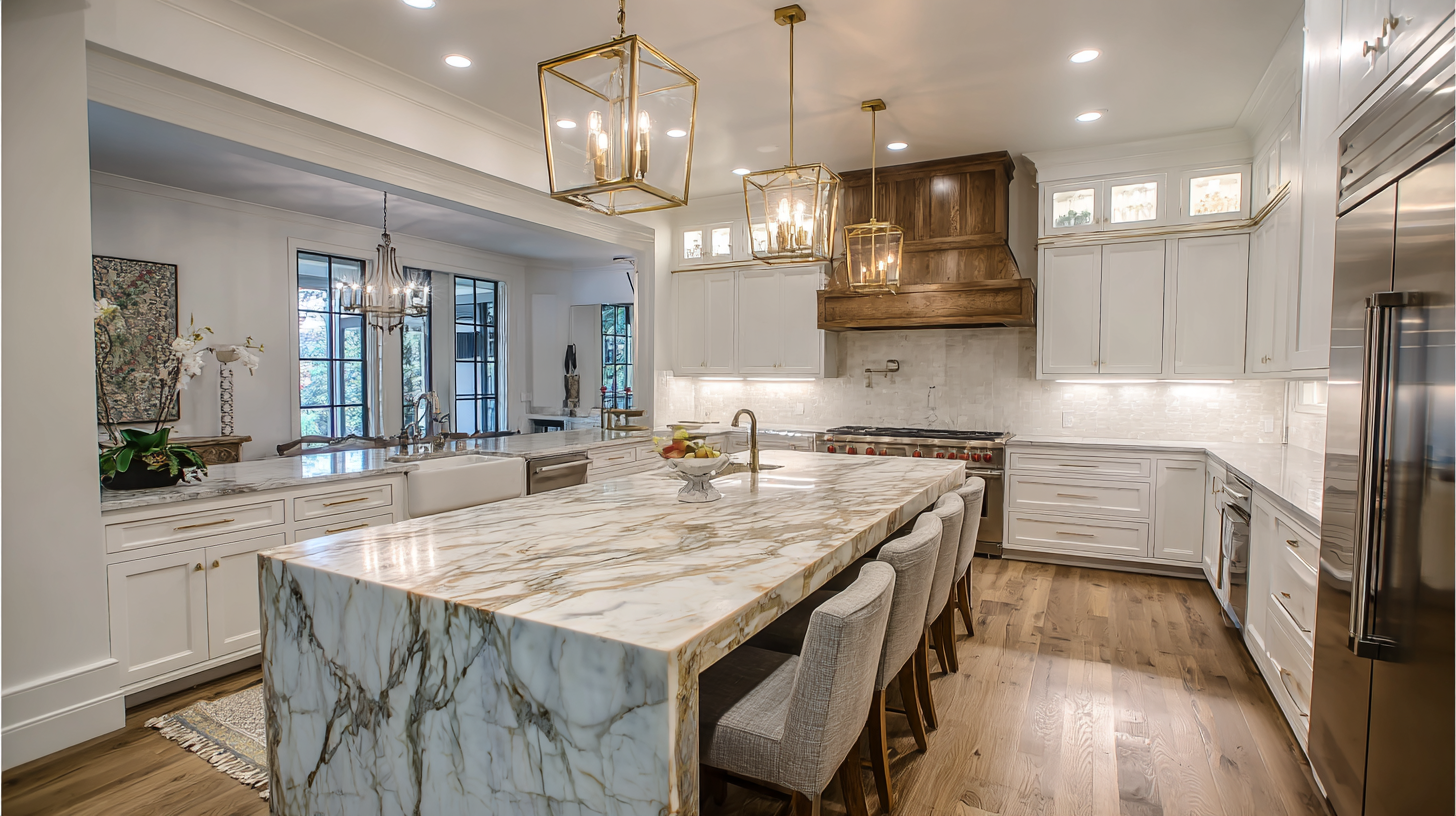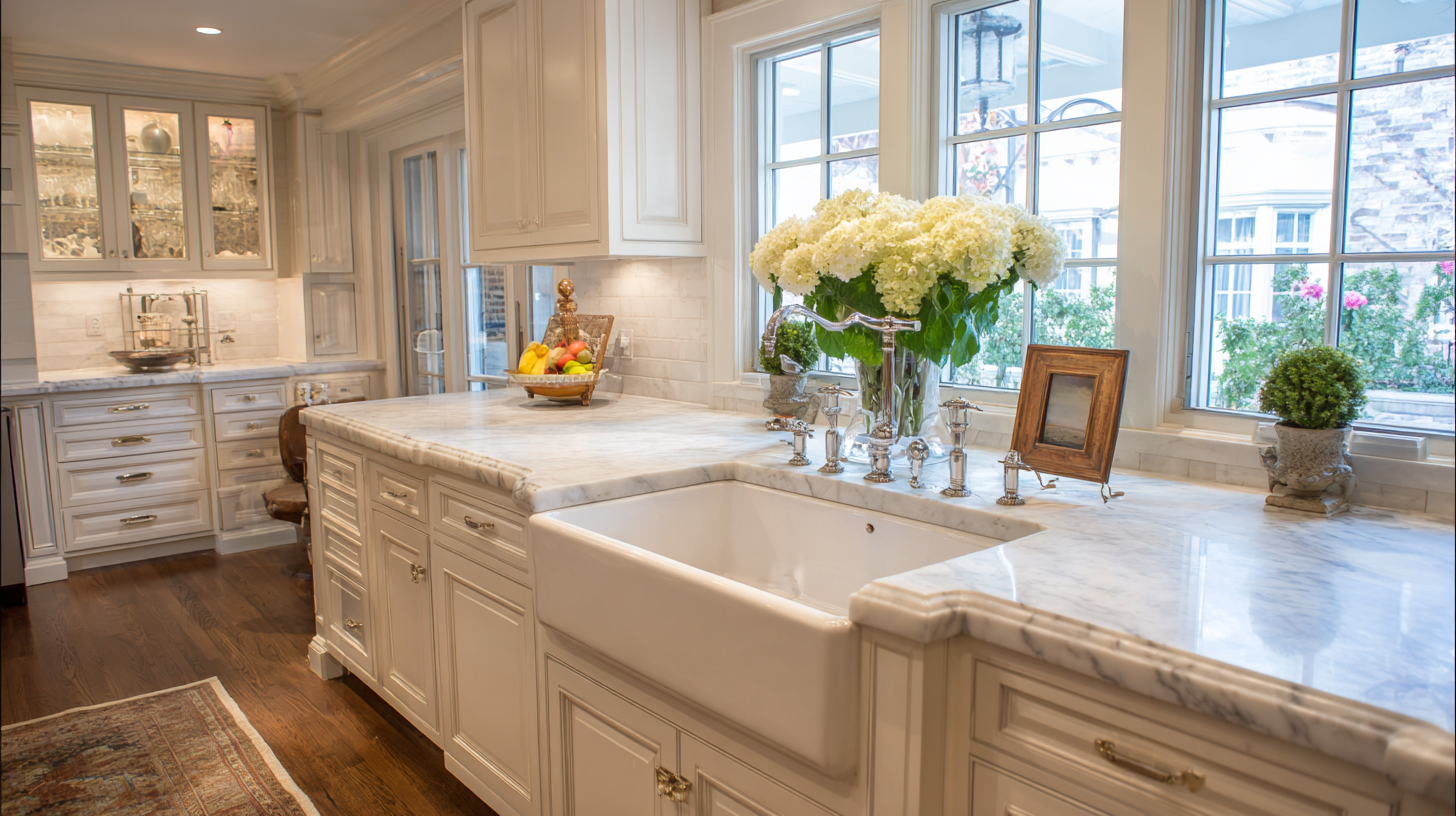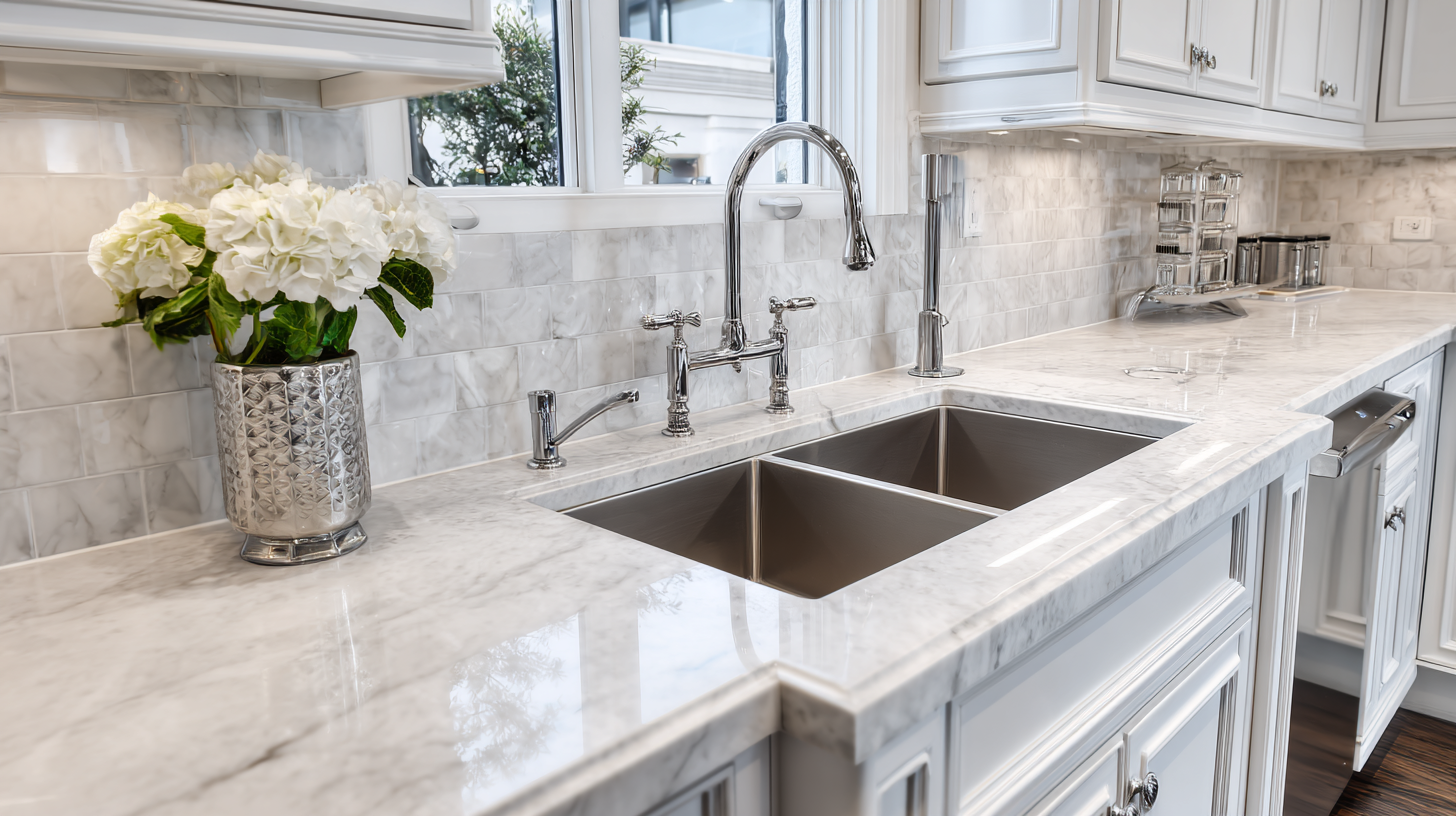Leave Your Message
In the realm of kitchen design, the counter sink stands out as a crucial element that marries functionality with aesthetic appeal. With the global sink market projected to reach approximately $5.5 billion by 2026, the demand for high-quality counter sinks is at an all-time high, driven by a growing emphasis on kitchen ergonomics and style. According to recent industry reports, a significant 70% of homeowners prioritize the aesthetic appeal of their kitchen sinks alongside practicality when renovating or building new kitchens. As consumers increasingly seek seamless designs that complement various kitchen styles, the need for innovative counter sinks has never been more pertinent. This ultimate comparison of the best counter sinks for every kitchen style not only highlights the finest options available on the market but also emphasizes the importance of selecting a sink that aligns with one’s unique design vision and lifestyle needs.

When selecting the perfect counter sink for your kitchen, several key features must be taken into account to ensure both functionality and aesthetics. According to a report from the National Kitchen and Bath Association, 70% of homeowners prioritize functionality when choosing kitchen fixtures. This includes sink depth, material, and style. For instance, a deeper sink can accommodate larger pots and pans, while stainless steel models typically offer durability and easy maintenance, making them a popular choice among 55% of consumers surveyed.
Additionally, the design of the sink should harmonize with your kitchen's overall style. A survey by the American Institute of Architects found that 68% of kitchen remodels incorporate undermount sinks, which create a sleek look and make cleaning countertops easier. Coupled with features such as noise reduction technology and integrated drying racks, modern counter sinks are not only practical but can elevate the entire kitchen experience. Investing time into understanding these essential features can lead to the perfect counter sink that enhances your kitchen's functionality and design.
Modern kitchens are all about blending functionality with aesthetic appeal, and choosing the right counter sink design can make a significant difference in achieving this balance. Sleek and minimalist designs, such as undermount sinks, provide a seamless look that aligns perfectly with contemporary cabinetry and countertops. These sinks are ideal for those who prioritize an uninterrupted visual flow, allowing the beauty of materials like quartz or granite to shine through. Additionally, their easy-to-clean nature enhances the practicality that modern homeowners seek.

For a more statement-making option, consider farmhouse-style sinks, which add a touch of rustic charm while still fitting within a modern context. These sinks, often made from materials like stainless steel or fireclay, feature bold, clean lines and deep basins, making them both stylish and functional. Pairing a farmhouse sink with sleek faucet designs can create a striking contrast that elevates the overall kitchen aesthetic. Whether you opt for understated elegance or a bold centerpiece, the right counter sink can serve as a defining element in your kitchen's design.
When it comes to kitchen design, rustic and farmhouse styles have surged in popularity, largely due to their warm and inviting aesthetics. According to a National Kitchen and Bath Association report, about 40% of homeowners are now opting for transitional and farmhouse designs, reflecting a growing desire for comfort in home interiors. Counter sinks that complement these styles, such as those crafted from natural materials like farmhouse-style sinks made of fireclay or durable copper, can significantly enhance the cozy atmosphere of a kitchen.
The choice of a counter sink in rustic kitchens not only influences the overall aesthetic but also impacts functionality. For instance, deep, wide sinks, which are characteristic of farmhouse designs, allow for easier cleanup and are ideal for handling large cookware. A survey by the Home Improvement Research Institute revealed that 62% of homeowners ranked functionality as the most crucial feature when selecting kitchen fixtures. By selecting a counter sink that embodies both form and function, homeowners can create a space that is not only beautiful but also practical for everyday use, ensuring that the kitchen remains a comfortable gathering place for family and friends.

When selecting a kitchen sink, understanding the functional benefits of different sink materials is crucial for both aesthetics and usability. Stainless steel sinks, for instance, account for nearly 60% of the market due to their durability and versatility. A study by the National Kitchen and Bath Association highlights that stainless steel sinks resist rust and corrosion, which makes them an excellent choice for busy kitchens that require regular cleaning and maintenance.
On the other hand, composite sinks, made from a blend of materials like acrylic and granite, have been gaining popularity, particularly in modern kitchen designs. According to a report from the Home Improvement Research Institute, composite sinks can withstand high temperatures and resist staining, making them ideal for homes where aesthetics and longevity are priorities. Furthermore, the market research indicates that homeowners who choose composite materials can expect a lifespan of 30 years or more, providing a significant return on investment.
Lastly, porcelain sinks, although not the most durable option, appeal to those seeking a classic look. While they are prone to chipping and scratching, they are easy to clean and resistant to heat. A survey conducted by the American Kitchen and Bathroom Market showed that 25% of homeowners still prefer porcelain for its timeless appeal, despite the challenges in maintenance. Each material brings unique benefits and considerations, highlighting the need for homeowners to assess their lifestyle and priorities when selecting the right kitchen sink.
| Sink Material | Durability | Maintenance | Style Compatibility | Cost Range |
|---|---|---|---|---|
| Stainless Steel | High | Easy to clean | Modern, Industrial | $200 - $600 |
| Cast Iron | Very High | Frequent maintenance needed | Farmhouse, Traditional | $300 - $700 |
| Composite Quartz | High | Moderate | Contemporary, Modern | $250 - $800 |
| Fireclay | High | Easy to maintain | Farmhouse, Rustic | $400 - $900 |
| Copper | Moderate | Requires polishing | Traditional, Rustic | $500 - $1,200 |
When it comes to installing a new counter sink, careful planning and attention to detail can significantly enhance both functionality and aesthetics in your kitchen. Begin by selecting the right counter sink that aligns with your kitchen style—be it farmhouse, modern, or traditional. Once you've made your choice, ensure that you have all necessary tools and materials ready before starting the installation. This may include a high-quality sealant, mounting clips, and plumbing supplies.
Next, measure your counter space accurately to avoid any complications during installation. Precision is crucial, as improper measurements can lead to gaps that will affect both performance and appearance. If you’re replacing an old sink, be sure to remove it carefully to avoid damaging your countertops. When fitting the new sink, apply sealant evenly around the edge to create a waterproof barrier, and follow the manufacturer's instructions closely.
Remember, taking your time during this process will save you from future headaches, ensuring that your new counter sink not only looks great but functions seamlessly in your kitchen.
